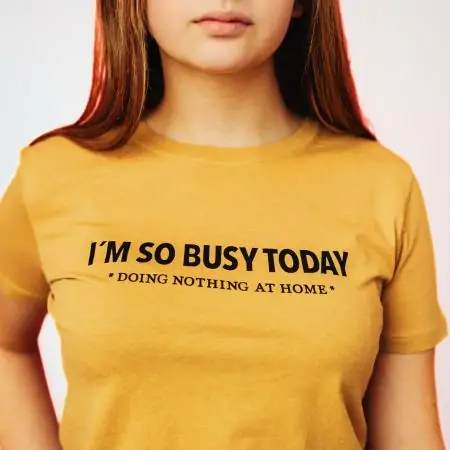
What Is Print On Demand? Everything You Need to Know
Print on demand is a process in which your images and graphics are printed on high-quality printers on t-shirts, cups, posters, mobile phone cases, pillows, watches, and similar items.
Introduction
In today’s digital age, product customization has become increasingly popular in various industries.
This demand has led to a new business model known as print on demand.
In this article, we will take a closer look at the concept of print on demand, its advantages, and how it transforms the way we purchase customized products.

- Introduction
- What is Print on Demand?
- How Does Print on Demand Work?
- Advantages of Print on Demand
- Cost-Effectiveness and Reduced Inventory Risk
- Choosing the Right Service
- Designing for Print on Demand
- Design Tools
- Marketing and Selling Print on Demand Products
- Future Trends in Print on Demand
- Major Print on Demand Platforms
- Frequently Asked Questions (FAQ)
- Conclusion
- Get the latest news!
What is Print on Demand?
Print on demand is a concept that refers to the production of personalized or unique items on order.
This concept allows for flexibility in production, enabling customers to choose the design, image, or text they want on an item, and the item is produced after the order is placed.
The technology used for printing on items depends on the type of item and the desired design.
Several technologies are commonly used in this process:
- Sublimation Printing: This technology is used for printing on items like mugs, T-shirts, pillows, and other textile products. Sublimation printing uses special inks that are heated to transform from a solid state to a gas and then pressed onto the surface of the item. This creates a durable and high-quality print.
- Direct-to-Garment Printing: With this technology, inks are applied directly to textile items such as T-shirts, bags, or coats. Direct-to-garment printing allows for high-quality printing with rich colors and details.
- UV Printing: This technology uses UV light to cure special inks applied to various items like wood, metal, or glass surfaces. UV printing provides a durable and high-quality print with scratch and fade resistance.
- 3D Printing: 3D printing is a technology used to create three-dimensional objects. Through 3D modeling and layering of materials, objects can be created on demand with high precision and complexity.

How Does Print on Demand Work?
When a customer orders a product, the design is sent directly to the printer or service provider.
The provider then prints the design on the selected item, such as a T-shirt, mug, or poster, using special printing techniques.
Once the product is ready, it is shipped directly to the customer, often with white-label packaging options.
Advantages of Print on Demand
Wide Range of Printable Items Print on demand offers incredible flexibility in terms of the range of products and design options.
Customers can choose from:
- Clothing (including men’s and women’s apparel such as T-shirts, hoodies, jackets, dresses, and shorts).
- Accessories (such as hats, bags, jewelry, caps, scarves, and socks).
- Wall Art (including canvases, posters, framed prints, and wall tapestries).
- Home Decor (pillows, candles, mugs, and towels).
Cost-Effectiveness and Reduced Inventory Risk
One of the main advantages of print on demand is its cost-effectiveness. Unlike traditional manufacturing, which requires significant upfront investments in inventory, print on demand allows for low-cost operations.
Since products are created on demand, there are no costs associated with excess inventory or unsold items, making it an ideal choice for entrepreneurs and small businesses.
Choosing the Right Service
When venturing into print on demand, it is crucial to select a service provider that best suits your needs for success.

Here are some factors to consider:
Print Quality and Capabilities
Look for a print on demand service provider that offers high-quality printing techniques, such as direct-to-garment (DTG) or sublimation printing.
The provider should have a proven ability to produce durable, vibrant, and long-lasting prints on various materials.
Product Catalog
Ensure that the provider offers a diverse selection of products that cater to your target market.
From clothing and accessories to home decor and stationery, having a wide range of items allows you to cater to different customer preferences.
Integration and Automation
Consider the integration options the provider offers with popular e-commerce platforms.
Seamless integration streamlines order processing, automated fulfillment, and real-time inventory tracking. This integration can save you time and effort in managing your print on demand business.
Designing for Print on Demand
Creating designs that work well with print on demand products requires careful attention to several aspects:
Resolution and Image Format
To achieve high-quality prints, ensure that your design files have a resolution of at least 300 dots per inch (DPI).
Also, use file formats that support transparency, such as PNG, for a professional look.
Mockups and Product Visualization
Use mockup tools or design software to visualize how your design will appear on different products.

This step allows you to make necessary adjustments to ensure that the design is well-placed and visually appealing.
Some platforms offer pre-made templates that you can download and import into the design software you are using for editing.
This ensures that your graphics will be perfectly positioned on the product, making the design process more convenient and efficient.
Copyright and Intellectual Property
Respect copyrights and avoid using designs that are protected by copyright or trademarks.
Create original art or obtain the necessary licenses and permissions for any copyrighted elements you want to include in your designs.
Design Tools
Here are a few image editing tools you can use for creating print-on-demand products:
- Adobe Photoshop: Adobe Photoshop is a professional image editing program that allows advanced editing, creation, and manipulation of images. With this tool, you can make various adjustments, retouching, color changes, and add text or graphics to your images.
- Canva: Canva is a web application that enables easy image editing and design creation without the need for advanced design skills. You can use Canva to edit images, add text, design elements, and graphics, and create various types of print-on-demand products.
- GIMP: GIMP (GNU Image Manipulation Program) is open-source image editing software that offers many image editing capabilities. It has similar functionalities to Photoshop and allows for adjustments, retouching, and creating images for your print-on-demand products.
- Pixlr: Pixlr is an online image editing tool that provides many options for editing, including color correction, retouching, adding effects, and text. You can use Pixlr to create custom designs for print-on-demand products.
- Inkscape: Inkscape is open-source vector graphics software that allows you to create vector graphics. You can use it to create logos, icons, and other vector elements for your print-on-demand products.
These are just a few of the many image editing tools available for creating and designing print-on-demand products.
The choice depends on your needs, skill level, and preferences in using a specific program.
Related: Canva – Image for Printing on a T-shirt
Related: Inkscape – How to Prepare an Image for Printing on a T-shirt?
Marketing and Selling Print on Demand Products
Effective marketing and selling of print-on-demand products require a comprehensive approach.
Consider the following strategies:
Selecting Categories and Target Audience
Identify a specific category or target audience for your products.
Focusing on a particular group of customers allows you to tailor your designs and marketing activities to align with the interests and preferences of your target audience.
Related: 10 Tips for Creating Profitable T-shirt Designs
E-commerce Platforms and Online Marketplaces
Utilize popular e-commerce platforms and online marketplaces to sell your products. Choosing the right platform that suits your needs provides greater visibility, easy order management, and integration with print-on-demand service providers.
Related: Etsy – How to Open an Online Store?
Related: What is Shopify?
You can create an online shop independently:
Related: What is Gumroad?
Related: How To Create A Free Online Shop On Payhip: Sell Digital Products Online
Social Media and Influencer Marketing
Actively use social media for promoting your products. Building a social media presence enables direct communication with potential customers and engagement.
Also, consider collaborating with influencers who have an audience that matches your target market
Future Trends in Print on Demand
The future of print on demand holds many exciting possibilities.
Here are a few trends we can expect:
- Advancements in Production Technology: This includes the development of more environmentally-friendly printing methods and increased production speed.
- Integration of Augmented Reality (AR): AR is being integrated into the custom product shopping experience, allowing customers to virtually preview and personalize products before making a purchase.
- Enhanced Personalization and Customization: Print-on-demand services are expected to offer even more advanced design options and greater flexibility in choosing materials and colors.
Major Print on Demand Platforms
Several major print-on-demand platforms offer a range of services to cater to your print-on-demand business needs.
Here are some of them:
Redbubble
Redbubble Redbubble is a complete print-on-demand platform that provides an all-in-one service.

It offers an editor for resizing and positioning images on products and allows users to browse and purchase other artists work.
When someone orders a product you’ve created, Redbubble takes care of production, shipping, and potential returns.
Perhaps the only drawback of this platform is the inability to advertise, so you will have to do it yourself.
Related: How to Open a Store on Redbubble?
Printful
Printful is a popular platform that enables printing and shipping of custom products, including clothing, accessories, home decor, and more.
It offers a wide range of customization options and integrates with various e-commerce platforms.

When a customer places an order, you submit a printing request, choose the printing company, and pay for the production of that specific product.
A similar system is in place on all the other platforms listed below.
Printify
Printify is another major print-on-demand service that offers a variety of products and customization options.

They collaborate with different suppliers to ensure high-quality products and fast delivery.
Related: Create profile on Printify
Shirtee Cloud
Shirtee Cloud is a German platform for designing and selling custom clothing and other products.

Users can create their designs and put them on items such as T-shirts, hoodies, mugs, and more.
Shirtee Cloud provides a simple and intuitive design tool for users to add text, images, and graphics to their products.
Company handles the production, delivery, and customer support, while users earn based on the sales of their designed products.
Gooten
Gooten is a global print-on-demand platform that offers a wide range of products, including clothing, home items, devices, and more.

It offers integration with popular e-commerce platforms and facilitates automated order fulfillment.
Print Aura
Print Aura stands out for its simplicity and speed. They offer various product types, from T-shirts to pillows and posters.

Print Aura also allows users to create their online store and integrate it with platforms like Shopify.
Scalable Press
Scalable Press is a print-on-demand service that provides high-quality products and competitive prices.

They offer a wide range of products and customization options.
Scalable Press also has advanced integration and automation capabilities for efficient order fulfillment.
Nude širok spektar proizvoda i opcija prilagođavanja.
Frequently Asked Questions (FAQ)
Conclusion
Print on demand is revolutionizing how we purchase customized products.
Its advantages, including flexibility, cost-effectiveness, and reduced inventory risk, make it an appealing business model for entrepreneurs and small businesses.
Selecting the right service provider, effective design, and marketing strategy are essential for success in this field.
Emerging technologies enable anyone to create their own designs and earn income by selling them.

Get the latest news!
Take a second, join our community, and discover the latest strategies and proven methods for earning extra income on the Internet.
